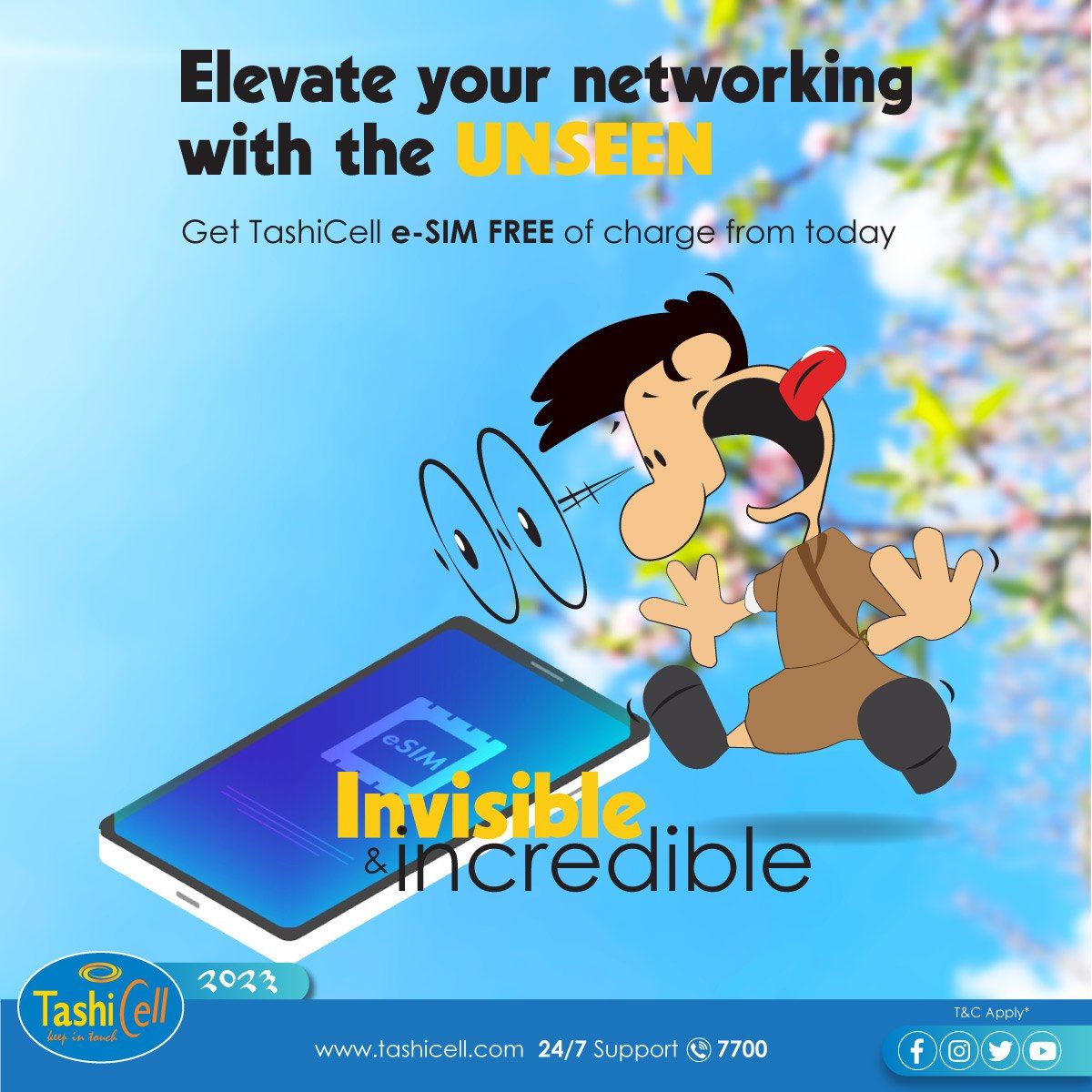
Passang Tshering
Unlocking the Potential of eSIM Technology
When eSIM or embedded SIM technology was introduced in Bhutan, I did not see a reason why I should get it because my phone already had two SIM card slots. However, after returning from a trip abroad, I found out that my TashiCell SIM card was damaged in the process of inserting it back into my phone. This gave me the opportunity to switch to eSIM instead of getting a new physical replacement.
The process of switching to eSIM was surprisingly easy. It was quicker than getting a physical SIM because all I had to do was scan the QR code provided by TashiCell. I was fascinated by how this new technology has transformed the way we connect to mobile networks, offering a wide range of flexibility and convenience that I have discovered since getting it.
Convenience: With eSIM, you don't need to physically insert or remove a SIM card from your device, which is less stressful on your device. And if you travel frequently and need to switch between different networks in different countries, you don’t have to worry about taking care of your Bhutanese SIM. Simply scan the QR code and you're connected to the new network.
Flexibility: If your phone has more than one SIM slot, then you already know how that allows you to have different networks and plans to switch between. However, eSIM gives you the option to have multiple numbers beyond your phone’s physical SIM capacity. It will be a liberating factor, especially for iPhone users who are limited by its stubbornness to have just one SIM slot. With eSIM, iPhone users can accommodate more than one SIM, yet leave the physical SIM slot to add another number for close friends and family.
Versatility: With eSIM not requiring any physical space inside your device, it’s a game-changer particularly for smaller devices like smartwatches, fitness trackers, and remote security cameras. It also opens up the possibility for laptops to have eSIM to connect to the internet, presenting new technology potentials waiting to be harnessed.
Security: eSIM can be more secure than traditional SIM cards as the information is stored on a chip within the device rather than on a removable card that can be lost or stolen. However, the risk of it being hacked remains the same as it did with the traditional SIM.
Environmentally friendly: eSIM eliminates the need for plastic SIM cards, which can be environmentally harmful. Considering the millions of SIM cards across the world that need not be produced in the future, eSIM can be nicknamed the environment SIM.
The only bad news is that eSIM is supported only in newer devices. Check if your phone has the eSIM feature, and if it does, there's no need to wait any longer to switch. If your phone doesn't have the feature, remember to look for eSIM capability the next time you invest in a new phone.
